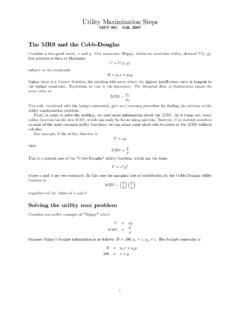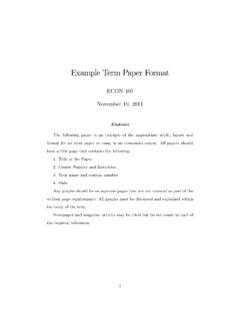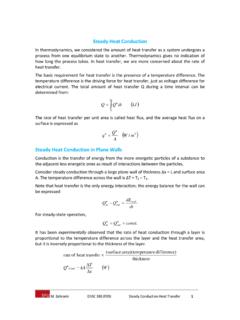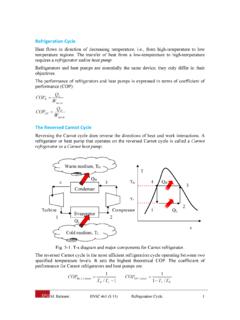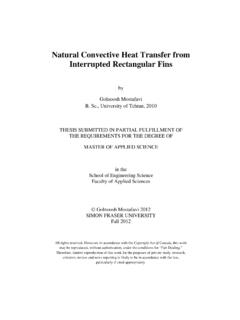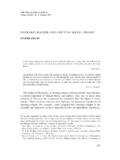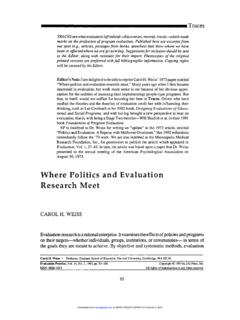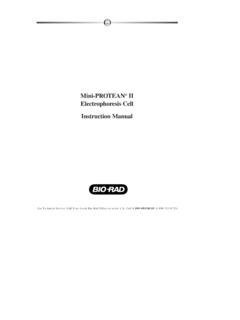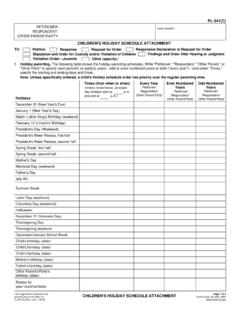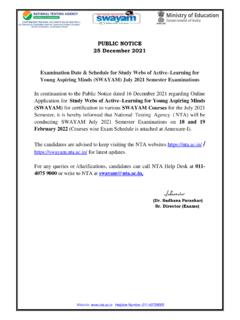Transcription of Comparison of RIP, OSPF and EIGRP Routing Protocols based ...
1 ENSC 427: COMMUNICATION NETWORKS SPRING 2014 FINAL PROJECT Comparison of RIP, OSPF and EIGRP Routing Protocols based on OPNET Project Group # 9 ~sihengw/ENSC427_Group9/ Justin Deng Siheng Wu Kenny Sun 301138281 301153928 301154475 Table of Contents List of 1. Routing Protocol Basics ..3 Routing Metrics Basics ..3 Static Routing and Dynamic Routing ..3 Distance Vector and Link State ..3 2. Three Routing Routing Information Protocol (RIP).
2 4 Open Shortest Path First (OSPF)..5 Enhanced Interior Gateway Routing Protocol ( EIGRP ) ..7 3. OPNET Topologies ..8 Mesh Topology ..8 Tree Topology ..9 Simulation Setup ..10 Simulation Setup for Failure/Recovery Simulation Setup for Individual DES Simulation Setup for Simulation Global Model Attributes ..12 4. Result and Analysis ..14 5. Future work and difficulties ..21 List of Figures Simple structure of Shortest path Basic structure of Mesh Basic structure of Tree Failure/Recovery RIP DES statics.
3 10 OSPF DES EIGRP DES Simulation Global Simulation Global RIP OSPF parameters ..13 EIGRP parameters ..14 Overlaid Convergence Activity on small Overlaid Convergence Activity on Overlaid Convergence Activity on Overlaid Convergence Activity on OSPF Average Convergence Duration over different EIGRP Average Convergence Duration over different Traffic sent Comparison on small mesh Traffic sent Comparison on mesh Traffic sent Comparison on tree topology ..20 2 Abstract In a computer network, the transmission of data is based on the Routing protocol which selects the best routes between any two nodes.
4 Different types of Routing Protocols are applied to specific network environment. Three typical types of Routing protocol are chosen as the simulation samples: RIP, OSPF and EIGRP . RIP ( Routing Information Protocol) is one of the oldest Routing Protocols still in service. Hop count is the metric that RIP uses and the hop limit limits the network size that RIP can support. OSPF (Open Shortest Path First) is the most widely used IGP (Interior Gateway Protocol) large enterprise networks. OSPF is based on the Shortest Path First (SPF) algorithm which is used to calculate the shortest path to each node.
5 EIGRP Enhanced Interior Gateway Routing Protocol) is Cisco's proprietary Routing protocol based on Diffusing Update Algorithm. EIGRP has the fastest router convergence among the three Protocols we are testing. More detailed description of these three Routing Protocols will be included later. We aim to analyze the performance of the three Protocols such as their router convergence, convergence duration and end-to-end delay. In our project, we are going to use OPNET to simulate RIP, OSPF and EIGRP in order to compare their attributes and performance.
6 According to the convergence we can find out which Protocols are suitable for different sizes and types of network. 3 1. Introduction Routing Protocol Basics A Routing protocol is the language a router speaks with other routers in order to share information about the reachability and status of network.(1) It includes a procedure to select the best path based on the reachability information it has and for recording this information in a route table. Regarding to select the best path, a Routing metric will be applied and it is computed by a Routing algorithm.
7 Routing Metric Basics A metric is a variable assigned to routers as a means of ranking them from the best to worst or from most preferred to least preferred. (1) Different Routing Protocols have different metrics. When there is more than one route between two nodes, a router must determine a method of metrics by choose the Routing protocol to calculate the best path. Static Routing Dynamic Routing Protocols can fall into two groups: static Routing and dynamic Routing . Static Routing is simply the process of manually entering routes into a device s Routing table via a configuration file that is loaded when the Routing device starts up.
8 In static Routing , all the changes in the logical network layout need to be manually done by the system administrator. However, dynamic Routing allows routers to select the best path when there is a real time logical network layout change. In our project, we will discuss the difference between the EIGRP , RIP and OSPF. All of them are belong to dynamic Routing Protocols . Distance Vector and Link State In addition, most Routing Protocols can be classified into two classes: distance vector and link state. Distance vector Routing protocol is based on Bellman Ford algorithm and Ford Fulkerson algorithm to calculate paths.
9 A distance vector Routing protocol uses a distance calculation and a vector direction of next hop router as reported by neighboring routers to choose the best path. It requires that a router informs its neighbors of topology changes periodically. Link state Routing Protocols build a complete topology of the entire network are and then calculating the best path from this topology of all the interconnected networks. It requires more processing power and memory because it has a complete picture of the network. 4 2.
10 Three Routing Protocols Routing Information Protocol (RIP) RIP is a standardized vector distance Routing protocol and uses a form of distance as hop count metric. It is a distance vector. Through limiting the number of hop counts allowed in paths between sources and destinations , RIP prevents Routing loops. Typically, the maximum number of hops allowed for RIP is 15. However, by achieving this Routing loop prevention, the size of supporting networks is sacrificed. Since the maximum number of hop counts allowed for RIP is 15, as long as the number goes beyond 15, the route will be considered as unreachable.
